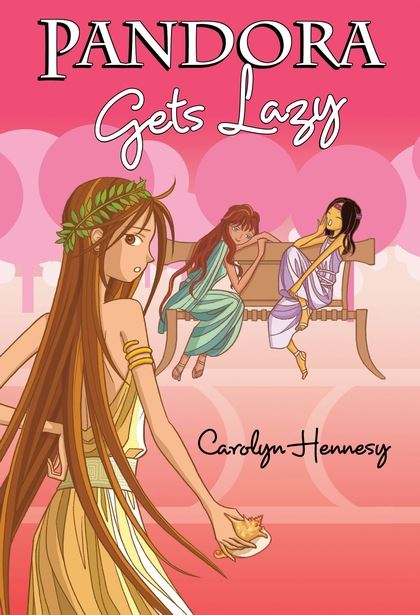Title of the work
Country of the First Edition
Country/countries of popularity
Original Language
First Edition Date
First Edition Details
Carolyn Hennesy, Pandora Gets Lazy. New York: Bloomsbury, 2009, 298 pp.
ISBN
Official Website
carolynhennesy.com (accessed: July 31, 2018)
Genre
Action and adventure fiction
Mythological fiction
Novels
Teen fiction*
Target Audience
Children (8–12 years)
Cover

Courtesy of Bloomsbury, publisher.
Author of the Entry:
Allison Rosenblum, Bar-Ilan University allie.rose89@gmail.com
Peer-reviewer of the Entry:
Lisa Maurice, Bar-Ilan University, lisa.maurice@biu.ac.il
Daniel A. Nkemleke, University of Yaoundé 1, nkemlekedan@yahoo.com

Weng Chen (Jade) (Illustrator)

Carolyn Hennesy
, b. 1962
(Author)
Carolyn Hennesy, born June 10, 1962, is an American actress, writer and campaigner for zoos. She trained at American Conservatory Theatre and the Royal Academy of Dramatic Art, London as well as earning a dramatic scholarship to the California State University at Northridge. She studied with the Groundlings and became a member of the Sunday Company. She also trained at the ACME Comedy Theatre and was a founding member of the all-female improv troupe, Ovaryaction. In 2001, she received the Natalie Schafer Award for Outstanding Comedic Actress, and the Ovation Award in 2011 from the LA Stage Alliance. She has appeared in numerous films and television series, and is best known as an actress for the part of Diane Miller on US day time soap opera General Hospital. She has also played recurring roles in Cougar Town, Revenge, and vampire series True Blood. Although she has a popular 25+ year career in film and television, Hennesy is also an author. In 2011 she published a novel based on characters from General Hospital, The Secret Life of Damian Spinelli. Her series of children’s books based on the character of Pandora begins with Pandora Gets Jealous (2008), and continues with Pandora Gets Vain (2008), Pandora Gets Lazy (2009), Pandora Gets Heart (2010), Pandora Gets Angry (2011), Pandora Gets Greedy (2012) and Pandora Gets Frightened (2013). She is involved in "a number of causes including caring for our wounded warriors and helping those with debilitating physical issues regain their self-esteem, but chief among all causes is the issue of animal rescue"*. In addition, she teaches improvisational comedy, and has a flying trapeze act. In interview Hennesy says she drew on her own "notebook" from when she was thirteen in writing the novels.
* Author's official website (accessed: September 23, 2020).
Sources:
Offical website (acccessed: February 1, 2018).
Interview with Carolyn Hennesy (acccessed: February 1, 2018).
Bio prepared by Amanda Potter, Open University, amanda.potter@caramanda.co.uk and Allison Rosenblum, Bar-Ilan University, allie.rose89@gmail.com
Sequels, Prequels and Spin-offs
Summary
This is the third instalment in a series of books called "Mythic Misadventures" that takes the classic story of Pandora's box and gives it a young, adventurous, partly contemporary twist – Pandora is Prometheus' thirteen-year-old daughter. In the third instalment, Pandora and her friends go to remove Laziness from her uncle, Atlas, who has put down his burden of holding the heavens, threatening the world with destruction. After Hera kidnaps her beloved dog Dido, Pandora finds it hard to think about getting to the Atlas Mountains to capture the next evil, Laziness, but with the responsibility of the world on her shoulders (literally at one point), she conquers her own laziness to do so. Her friends get separated from her and have their own adventures before the group reunites with her towards the end of the book and accomplish their mission.
Analysis
Pandora Gets Lazy introduces a new element of Greek mythology by incorporating Atlas, a god who is forced to hold up the heavens forever. By having Atlas hand his job over to people incapable of the task, the book shows how laziness can bring about destruction. It also shows the importance of adaptability as Pandora is separated from her friends at the start of the novel and must continue regardless.
As the other books in the series, this is aimed strongly at teen and early teen girls, with humour and contemporary language. It has a didactic message that is put across in a light-hearted way while incorporating information from Greek mythology in a manner reminiscent of the Percy Jackson books. The use of the female heroine is also empowering for young girls. In this book the material gets somewhat darker, so that the series overall becomes something of coming of age texts for its target audience.


